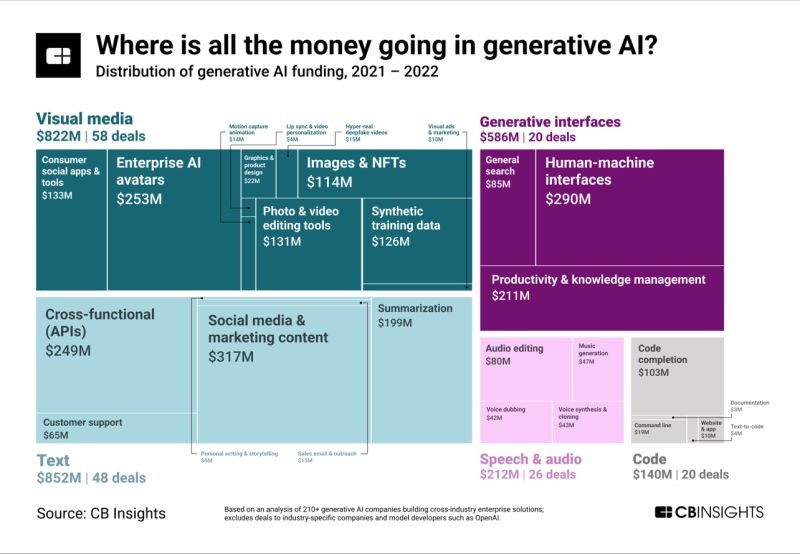It seems like it’s the best of times for founders thinking about launching an AI startup, especially with OpenAI releasing ChatGPT to the masses, as it has the potential to really put AI front and center in business and perhaps everything we do technologically. Who wouldn’t want to launch a startup right now with the energy and hype surrounding the industry?
But it also could be the worst of times for founders thinking about launching an AI startup, especially one that can grow and be defensible against incumbents in a fast-changing environment. And that’s a real problem for companies thinking about this area: AI is evolving so rapidly that your idea could be obsolete before it’s even off the ground.
How do you come up with a startup idea that can endure in such a challenging and rapidly evolving landscape? The bottom line is that the same principles that apply to previously successful startups apply here, too. It just may be a bit harder this time because of how quickly everything is moving.
A bunch of successful founders and entrepreneurs spoke last week at the Imagination in Action conference at MIT. Their advice could help founders understand what they need to do to be successful and take advantage of this technological leap.
What’s working?
CB Insights compiled data from 2021 and 2022 to understand where VC investment money has been going when it comes to generative AI startups. Given the recent hype around this area, it’s reasonable to think that the volume of investment will increase, and perhaps the allocation will be different, but this is what we have for now.

Image Credits: CB Insights
But will these numbers still be relevant for 2023 and beyond — and how do you build a successful AI startup that attracts investment dollars?
Sam Altman, OpenAI co-founder and CEO, who spoke via Zoom at the conference, said that you have to think about this next generation of startups a little differently, but ultimately it comes back to the basics of building any successful startup.
“I think you never want to lose sight of vision and focus on the long term. But the very tight feedback loop of paying attention to what is working and what is not working, and doing more of the stuff that’s working and less of the stuff that’s not working, and just very, very careful user observation can go super far,” he told conference attendees.
His advice is to just listen to your customers and respond to their needs. “I can speculate on ideas, you can speculate on ideas. None of that will be as valuable as putting something out there and really deeply understanding what’s happening and being responsive to it,” Altman said.
Vinod Khosla, the longtime venture capitalist, founder at Khosla Ventures and early OpenAI investor, speaking via Zoom at the event, said that speed of change is a huge factor in building an AI startup right now: Your idea could be obsolete before it’s even off the ground, which means, you have to think about ideas that can stand the test of time.
“I looked at the recent YC batch, and when OpenAI released one feature, which is plug-ins, around half the batch got obsoleted. Literally, they were doing something minor with ChatGPT or GPT-4,” Khosla said. Working backward from ChatGPT, or whatever the flavor of the month happens to be, won’t necessarily work for AI startups because your idea won’t be built to stand up to changes coming from OpenAI itself, and presumably other larger incumbents, he said.
“So there are ways to build differentiation both in the application domain and in the fundamental model domain – and then assembling the right teams to go after these products,” Khosla said.
Speaking on a panel made up of successful founders, Deep-Mind CEO and co-founder Dileep George said that you have to build something that stands up to deployment outside of the lab. “What you really need to be worried about is the demo-to-deployment gap that all AI systems have. It’s very easy to create a demo in the lab, but to make it a deployment to get customer value, there’s a big gap in real-world deployment. And that’s where all the pain in use cases that come up in AI, and you have to be aware of that and mitigate that from day one,” George said.
Stick to basics
Steve Papa, who founded Endeca, a database company that was sold to Oracle in 2011, and later founded Toast, the restaurant management tool, says that regardless of the technology, the same success principles always apply and the same types of startups tend to be successful over time. The trick here is to figure out how AI is going to make existing tooling better.
“We’re old enough to have been able to see in the ’90s, the aughts and the teens, and the same [types of] companies are rebuilt, they get acquired, and then a whole new generation [comes along to solve] each of these classes of problems. And there’s got to be one for every one of those where AI is gonna fuel it, accelerate it, make it more capital efficient, make it go faster,” Papa said.
And sometimes you just need to look at ways to plug in AI to make existing enterprise software better, faster and easier to use, said Brian Halligan, who co-founded Hubspot and is now working on a new venture firm called Propeller to invest in green tech related to the world’s oceans.
“Every piece of enterprise software is going to go through [a] transition similar to how the world of DOS went to Windows [to change] the way you interact with the software,” he said.
But you also need to prepare by building resilience and defensibility into your startup. Khosla said that if you are going to build a successful company, you have to do it by thinking about what’s coming next to large language models, or even maybe something that doesn’t involve large language models, but another approach to building AI. Regardless, you have to think creatively, and look beyond whatever is happening right now.
“I suspect there are some people in the audience who say, this is not the end all and large language models are not the only way to do AI. So we are actively investing in alternatives approaches to large language models and bigger and bigger models,” he said.
If you look at the growth in capability we have seen from GPT-2 to GPT-3 to GPT-4, it’s likely only to increase as we get to the next versions of the model, he said. Smart founders will be thinking about future capabilities instead of building for current ones.
“For the entrepreneurs in the audience, I’d say you need to skate where the puck is going, not where it is,” he said.
